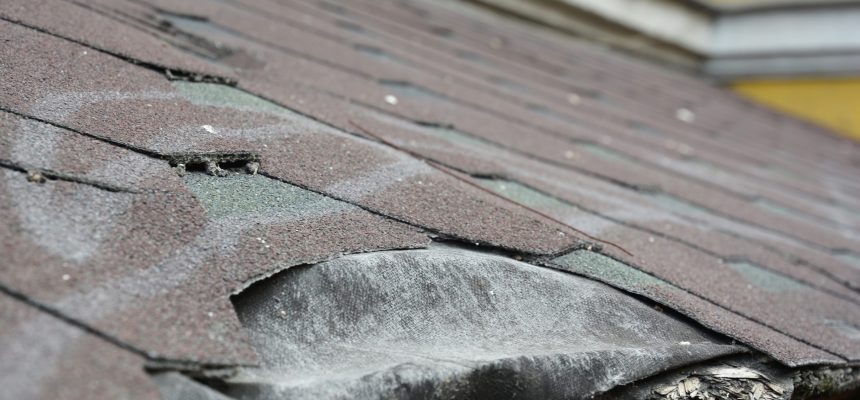Regardless of where you live in the USA, you’ve probably encountered rough weather at some point in your life. Things like summer squalls that bring wind/rain, hurricanes, tornadoes, hailstorms, and even snow can do some severe damage to your roof and other exterior surfaces of your home.
Things to do After a Storm
After a storm, you’ll need to determine if your roof has sustained any damage. Then, you’ll want to contact the professionals at A&J Reliable for help.
Below, we’ll take a look at the various types of roof damage and explain the steps you should take.
Types of Roof Damage Due to Storms
What are some weather-related things that can cause damage to your roof? Wind, hail, standing water, and even debris. Let’s look at each one of these below.
Wind
Hurricane-force winds (that is, winds that are 74 mph or higher) and gale-force winds (winds that are between 39 to 54 mph) can cause damage to your roof. High winds are known to remove/tear shingles, which leaves the waterproofing material, roof deck, or underlayment exposed to the elements.
Even during storms that are not as severe, gusts can cause shingles to be lifted and curled.
When shingles are installed, they are overlapped. This creates a watertight seal. When the shingles are lifted and curled, the seal is broken. This leaves your roof vulnerable to damage from the rain.
Hail
Typically, hailstorms are relatively short- rarely lasting more than 15 minutes. However, that’s plenty of time for damage such as dents and pockmarks to be left in your shingles. It can also knock granules loose, which is a problem because they help prevent damage from the sun and rain.
Additionally, hail damage can harm the aesthetics of your roof.
Standing Water
If your roof doesn’t have proper drainage, you will end up with standing water on your roof after a rainstorm, especially in uneven areas. Additionally, clogged gutters can cause rainwater to back up under your shingles. This means that moisture can penetrate the roof deck or underlayment.
Debris
Depending on the severity of the storm, you may end up with debris on top of your roof, from small branches to large tree limbs. Larger objects can have an impact on the surface of your shingles, which opens that area up for intrusion of moisture. However, the lighter branches may not cause any problems at all.
Snow
Snow can cause damage to your roof as well. Snowmelt can weaken the various parts of your roof including the frame and the shingles. Additionally, ice dams can form, which blocks water from properly draining off- leaving standing water on your roof to weaken it and cause damage. If the snow itself doesn’t cause damage, you may end up causing damage to your roof yourself when you try to remove it- therefore, it’s best to call in the professionals.
Schedule a Roof Inspection
After a storm, you’ll want to contact a professional roofing contractor to schedule an inspection/damage assessment. The contractor will often offer free inspections and know how to safely and adequately assess for damage.
Roof Inspection Checklist
Before contacting a professional, you can do a quick inspection of your own. Here’s what you need to be looking for:
Roof
Walk around the perimeter of your house and visually inspect the roof. Make sure to note any visible damage. You might be able to get a good view of some of your roofs from your windows. Be sure to make notes and take pictures, as this may be helpful for insurance purposes.
You’ll want to document damage such as missing, torn, dented, or curled shingles.
Gutters/Vents/Windows
Pay attention to the gutters and roofing accessories (such as overhangs, gable vents, etc.) and check for damage. You’ll also want to check for cracks, broken glass, torn screens, and loose weather stripping on your windows.
Attics/Ceilings
Inspect attics/ceilings for leaks and water spots. While it might seem that there’s no exterior damage on your roof, things like wind and hail can cause damage that is not fully visible.
Check your attic as well as ceilings and light fixtures for water spots/leaks. If inspecting a dark area, use a flashlight.
Contact Your Insurance Provider
If you do find that your roof is damaged after a storm, it’s necessary to go ahead and file a claim with your insurance company. They will help ensure that you get adequate compensation based on the information you collected in your inspection (or the licensed roofing contractor collected). They may also send out their own assessor/adjuster to evaluate the damage and ensure you’re making a legitimate claim.
Hire a Contractor You Can Trust
At A&J Reliable, we know how important it is for you to choose a contractor to work with that you can trust. After a big storm, you may find that contractors offer discounts/deals that are too good to be true. If this is the case- it probably is.
Our professionals can:
- Assess the damage to your roof
- Provide you with an estimate on repair/replacement cost
- Repair/replace your roof
Please give us a call today! At A&J Reliable, we are here for all of your roofing (and another home repair) needs.





